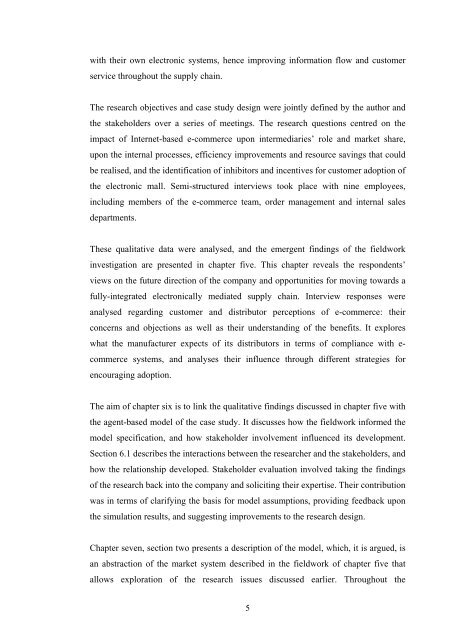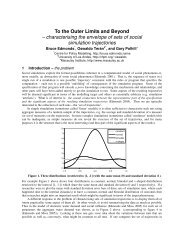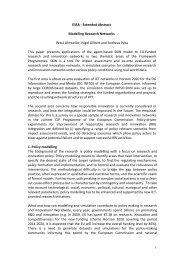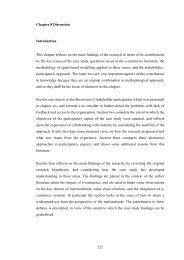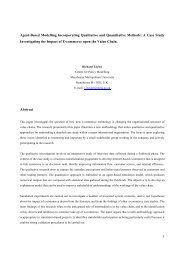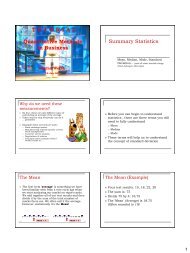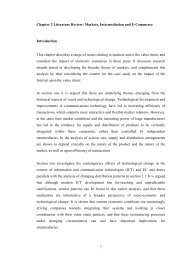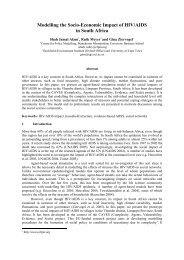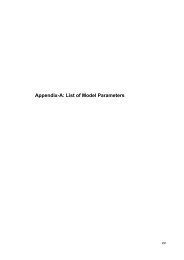3 Chapter 1 Introduction This thesis addresses questions ...
3 Chapter 1 Introduction This thesis addresses questions ...
3 Chapter 1 Introduction This thesis addresses questions ...
Create successful ePaper yourself
Turn your PDF publications into a flip-book with our unique Google optimized e-Paper software.
with their own electronic systems, hence improving information flow and customer<br />
service throughout the supply chain.<br />
The research objectives and case study design were jointly defined by the author and<br />
the stakeholders over a series of meetings. The research <strong>questions</strong> centred on the<br />
impact of Internet-based e-commerce upon intermediaries’ role and market share,<br />
upon the internal processes, efficiency improvements and resource savings that could<br />
be realised, and the identification of inhibitors and incentives for customer adoption of<br />
the electronic mall. Semi-structured interviews took place with nine employees,<br />
including members of the e-commerce team, order management and internal sales<br />
departments.<br />
These qualitative data were analysed, and the emergent findings of the fieldwork<br />
investigation are presented in chapter five. <strong>This</strong> chapter reveals the respondents’<br />
views on the future direction of the company and opportunities for moving towards a<br />
fully-integrated electronically mediated supply chain. Interview responses were<br />
analysed regarding customer and distributor perceptions of e-commerce: their<br />
concerns and objections as well as their understanding of the benefits. It explores<br />
what the manufacturer expects of its distributors in terms of compliance with e-<br />
commerce systems, and analyses their influence through different strategies for<br />
encouraging adoption.<br />
The aim of chapter six is to link the qualitative findings discussed in chapter five with<br />
the agent-based model of the case study. It discusses how the fieldwork informed the<br />
model specification, and how stakeholder involvement influenced its development.<br />
Section 6.1 describes the interactions between the researcher and the stakeholders, and<br />
how the relationship developed. Stakeholder evaluation involved taking the findings<br />
of the research back into the company and soliciting their expertise. Their contribution<br />
was in terms of clarifying the basis for model assumptions, providing feedback upon<br />
the simulation results, and suggesting improvements to the research design.<br />
<strong>Chapter</strong> seven, section two presents a description of the model, which, it is argued, is<br />
an abstraction of the market system described in the fieldwork of chapter five that<br />
allows exploration of the research issues discussed earlier. Throughout the<br />
5


